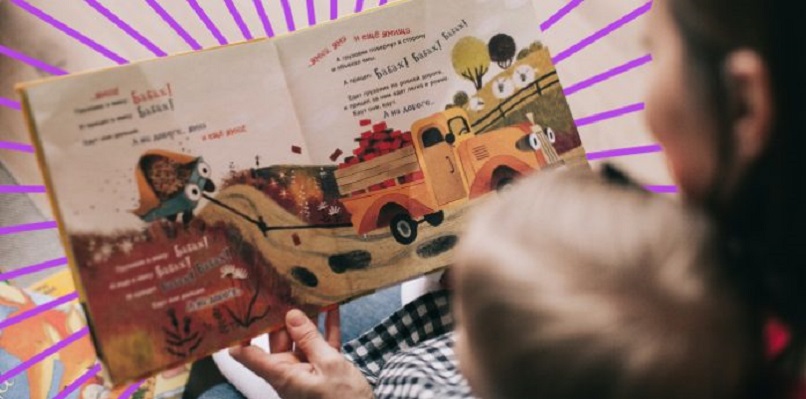
Bedtime stories that are read to children as a way to wind down before sleep, have long been a cherished ritual in many households. These stories however, are more than just mere rituals as we will try to discuss in this article. The intimate moments that these rituals provide before sleep might play a significant role in the mental and emotional wellbeing of children. In addition to make children and caregivers feel relaxed.
Beyond the obvious benefits of relaxation, bedtime stories create emotional connections, help alleviate anxiety, and promote a sense of safety. By nurturing imagination and empathy, they also equip children with essential coping skills that enhance their resilience in the face of real-life challenges. These positive effects make bedtime storytelling a vital tool in promoting children’s overall emotional well-being.
Building Emotional Connections and Security
One of the key mental health benefits of bedtime stories is their ability to foster emotional bonds between children and their caregivers. During storytelling, children receive undivided attention, creating an environment where they feel valued, secure, and loved. This time of connection reinforces the emotional attachment between the child and caregiver, which is crucial for a child’s sense of safety and stability.
A secure attachment, developed through activities like reading together, has been shown to significantly impact emotional development. According to attachment theory, when children consistently experience warmth, presence, and support, they develop a secure bond with their caregivers. This sense of security is essential for building resilience, as it creates a safe emotional foundation for children to explore the world, express themselves, and develop healthy coping mechanisms. The emotional comfort derived from regular bedtime storytelling also fosters trust, which is vital for children’s mental health and long-term emotional well-being.
Reducing Anxiety and Fostering Relaxation
Bedtime stories provide an excellent way to reduce anxiety in children, especially those who may struggle with fear, stress, or unease before sleep. Children often experience heightened anxieties at bedtime, such as fears of the dark, nightmares, or separation from their caregivers. Stories offer a form of distraction, helping children shift their focus from worries to engaging narratives that calm their minds.
The rhythm of storytelling, combined with the soothing tone of a caregiver’s voice, creates a tranquil environment that encourages relaxation. Familiar bedtime stories, in particular, can serve as a comforting ritual, as repetition and predictability help children feel in control of their surroundings. This sense of routine helps calm the nervous system, signaling that it is time to transition to sleep. As children become absorbed in a story, they can also mentally distance themselves from their daytime anxieties, creating a peaceful mental space that promotes relaxation and helps ease the transition to sleep.
Moreover, many stories contain moral lessons, empowering children to confront and process their fears indirectly through the characters in the narrative. When a child sees a character overcoming obstacles, they learn that challenges can be managed and fears can be faced, which can subtly reshape how they handle their own anxieties in real life.
Encouraging Imagination and Developing Empathy
Bedtime stories also serve as a powerful tool for nurturing children’s imagination and empathy. The creative aspect of storytelling stimulates cognitive development, allowing children to visualize different worlds, characters, and situations. This imaginative process helps children think more broadly about life and other people, fostering a sense of curiosity and wonder.
When children encounter various characters and perspectives in stories, they are exposed to different emotions, experiences, and cultures. This exposure can help develop empathy as children learn to understand and share the feelings of others. By putting themselves in the shoes of the characters, children can begin to see the world from different viewpoints, which enhances their emotional intelligence. Empathy, in turn, plays a key role in building healthy relationships, improving communication, and supporting emotional well-being.
For example, a story about a character facing loneliness or fear can resonate with a child who has experienced similar feelings. The child may find comfort in knowing they are not alone in their emotions, and the story may provide new ways to cope with their challenges. These early experiences with empathy, reinforced through storytelling, can have a lasting impact on how children relate to others and manage their own emotions.
Building Coping Skills for Real-Life Challenges
In addition to fostering imagination and empathy, bedtime stories also provide valuable life lessons that can help children develop coping skills for real-world challenges. Many classic bedtime stories feature characters who navigate difficult situations—whether it’s overcoming fear, standing up for what’s right, or dealing with loss. These narratives offer children a safe space to explore complex emotions, like sadness, fear, or frustration, while offering solutions or positive outcomes.
By witnessing characters successfully manage their problems, children can internalize these coping strategies and apply them to their own lives. For instance, a story about bravery in the face of adversity can inspire children to approach their fears with courage. Similarly, stories about friendship, kindness, and perseverance can reinforce positive values and problem-solving skills that children can use in their daily interactions.
Follow this link to join our WhatsApp group: Join Now
Be Part of Quality Journalism |
Quality journalism takes a lot of time, money and hard work to produce and despite all the hardships we still do it. Our reporters and editors are working overtime in Kashmir and beyond to cover what you care about, break big stories, and expose injustices that can change lives. Today more people are reading Kashmir Observer than ever, but only a handful are paying while advertising revenues are falling fast. |
| ACT NOW |
| MONTHLY | Rs 100 | |
| YEARLY | Rs 1000 | |
| LIFETIME | Rs 10000 | |











